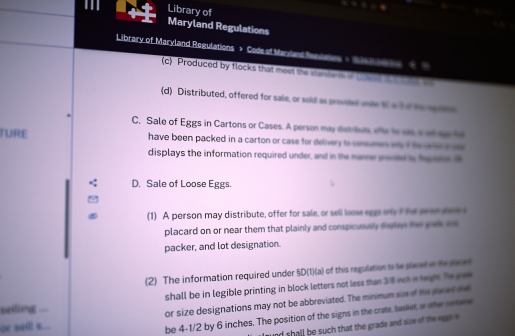California launches nation’s first state data portal built on open source

Last month, California became the first state to launch an open data portal on an open source platform. The website establishes a new outlet for transparency efforts while giving other state agencies across the nation access to the core technology needed to replicate the effort.
The state’s Office of Digital Innovation, within the Department of Technology, worked with vendor GovDelivery to create a customized version of DKAN, a Drupal-based open data platform maintained by NuCivic.
Scott Gregory, chief of the innovation office, told StateScoop that much of California’s diverse technology portfolio is closed source, but he felt that wasn’t the right path for his team to pursue as they contemplated how to improve California’s open data efforts.
“We needed a tool that would allow us to expand and contract with the needs of not only our citizens, but also the demands of just doing business in California,” Gregory said. “We determined that if we took an open source route, that would allow us to be able to craft our own destiny, manage the outcomes better, not be tied to the direction of a company or organization and really define our own destiny when it comes to open data.”
And by making the new site open source, Gregory said, the state also opens “an invitation for government and citizens to get together” and make the portal better.
“Surprise, surprise — government doesn’t have all of the answers,” Gregory said. “For us, it’s an attempt to bring government closer to citizens by sitting down and understanding their needs and building tools with a user-first focus to really deliver things that are meaningful to folks. Instead of building and developing in a vacuum, we have to be reaching out and touching the people who are actually impacted and using the tool.”
Gregory said he first started thinking about the potential of an open source open data portal following the “GreenGov Challenge,” a hackathon the state hosted last October to get people working with the state’s environmental data. The state shared the results of that event by piloting its first statewide open data portal with open data vendor Socrata, and Gregory said the process “launched a lot of ideas.”
But as Gregory and his team started thinking about how to expand the types of data available and otherwise improve the portal, they decided they needed to think bigger.
“We wanted it to take only a few clicks to get to information, have big search bars, big images, make it very easy to understand and have intuitive instructions on how to get to information, all the while using open source,” Gregory said.
The team leaned on the worldwide DKAN community to learn about the platform, including one group in their own backyard: the General Services Administration’s 18F agile development team in San Francisco. They met with that team several times to learn more about their what went well in their projects, and also made their way to San Diego to learn from the officials there.
The new site was mostly functional by Sept. 1, just three months since they had begun.
“Typically in government, projects don’t move that quickly,” Gregory said. “And one of the major reasons why it did move that quickly is because we took that agile development, agile procurement approach to getting this out the door and moving it along.”
So far, Gregory says their efforts have proved to be a rousing success, judging by the number of “compliments and virtual high fives” he’s earned from colleagues since the portal’s gone online.
“Now we have people come out and say, ‘How do we contribute, how do we play?” Gregory said.
Gregory said he is eager to hear from people on how the portal can be better, but he’s also got plenty of changes for it in mind. He shared plans to expand the portal’s reach by connecting to portals to those maintained by individual agencies.
“Think of it kind of like a hub and spokes,” Gregory said. “Those can connect to the state’s platform and users can search across it to really discover meaningful information.”
Next, Gregory said, is to “begin to mature our data stories and analytics” around that information. He also shared ambition to collaborate with some of California’s largest localities and connect their open data offerings to the state’s portal.
“If you think about it in terms of data, our best data is localized data,” Gregory said. “The most pertinent, most detailed and accurate information is going to come from our smallest unit of government. That’s always been the case and we’re looking to begin to partner with San Diego, Los Angeles, San Francisco, all of the counties. It’s just a matter of time. … Data is an asset, like a bridge, like a levy, like a building, and we need to be able to curate that and manage it and maintain it in the same manner. Our hope is that we’re going to change the culture around how people manage and engage with and view data, moreso as an asset than just as this thing, and the platform is the first step in allowing us to do that.”






